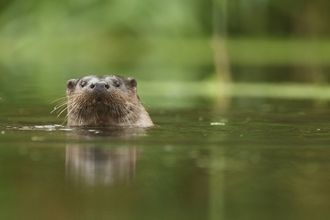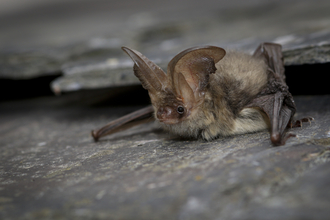In late October the witching world gears up for its annual highlight: Halloween. Every gift shop and many supermarket aisles fill with plastic tat; spooky spiders, witch masks, zombie costumes and yes, toy skeletons. Shropshire Wildlife Trust members who have seen me at events around the county are familiar with my passion for skulls and bones, so you may assume that I feel very much at home during this season. I confess that this is not actually the case; I am judging the anatomical accuracy of every toy or decorative skeleton in the shops, and I’m always seriously disappointed. Let’s talk about skeletons.
A bone to pick…
Animals with a ‘spooky’ image are given the Halloween skeletonised treatment; humans obviously, bats, cats, dogs, toads, crows (even boneless invertebrates like spiders and scorpions) ranging from moderate pocket money prices (£2.99) to serious money, £15, £20, approaching £50 for a life-size human. There are obvious unnecessary details like huge ‘bony’ ears for the bats, cats and dogs; ‘bony’ feathers for the crow, ribs for the toad (real frogs and toads don’t have true ribs), and the very existence of arthropod endoskeletons- scorpions with ribs- is utter anatomical nonsense (they have chitinous exoskeletons on the outside of their bodies).
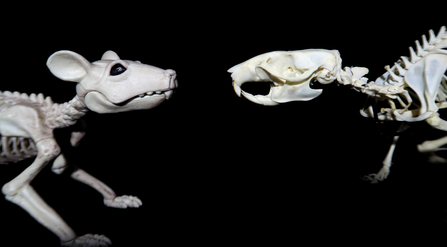
(L) fake rat vs (R) real rat skeleton (Ric Morris)
I’d grudgingly agree that rat and bat skeletons do look more rat and bat-like having added a pair of fake bone ears, even though I obviously don’t approve. One small thing that pleases me is that the grotesquely vampiric bat skeletons (one or two of which are on my SWT recruiter stand all year) are moulded with feet pointing backwards; and thanks to unusually realigned lower limb joints, real life bats share this feature enabling them to cling to rock, brickwork and wood, or hang upside down, depending on the species.
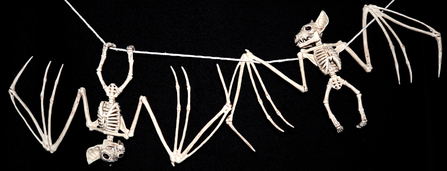
Realistic bat skeletons (Ric Morris)
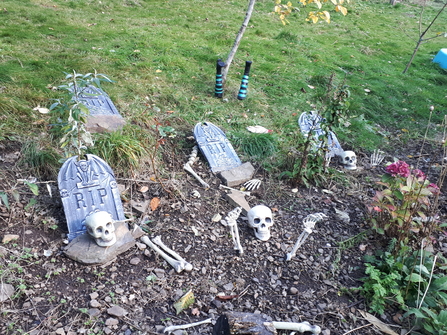
Spooky graveyard
I suppose it’s obvious why we use toy skeletons for spooky effect. Most parents object to kids exhuming long-dead Rover to decorate the house for All Hallows’ Eve, neither would they permit their child to use real roadkill for a Trick or Treat prop. A set of genuine human bones emerging from a real coffin on the front lawn of a suburban semi is an absolute no-no in anyone’s book, invoking repulsion and disgust rather than a delicious shudder. My preferred approach is to sidestep the flippancy of the ‘skeletoys’ and showcase the real stories that animal bones offer.
I argue that bones tell two tales. First, the adaptation of an animal for its ecological niche. The locked-on mandibles and huge sagittal crest of a badger give accuracy and enormous strength to its bite (certainly overkill when eating earthworms but arguably of evolutionary advantage when the animal defends itself against apex predators such as wolves or bears that we’ve lost from the UK); the self-sharpening incisors of rodents and the tweezer-like ability to independently flex their lower jaws, helping to crack nuts.
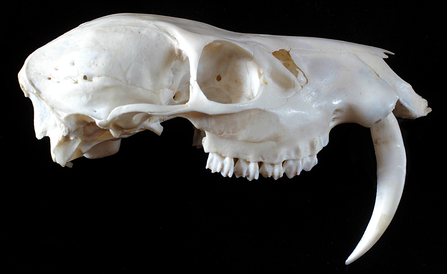
Chinese Water Deer (Ric Morris)
The unfeasibly enormous canine teeth of male Chinese water deer, used for fighting during the rut. Scientists will look for scar tissue in roadkill to determine their place in the ‘pecking order’. Scar tissue around the neck or chest indicates a male ready to engage with others, while scar tissue on the rump suggests it spent a lot of time fleeing from more dominant males!
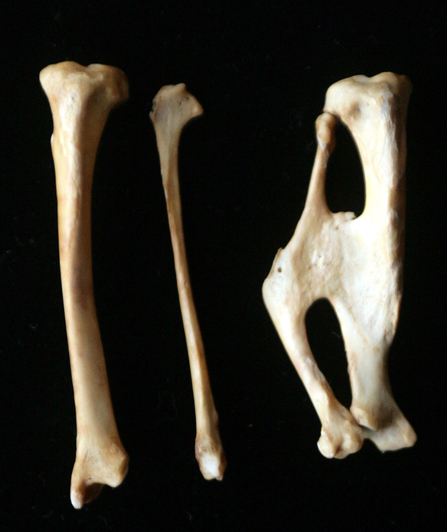
Polecat fractured and rehealed tibia and fibula (Ric Morris)
The second tale is of the individual animal. Fractured and re-healed bones can be fascinating to decode, for example.
Did that polecat’s previously broken back leg mean that it was slow crossing roads, leading to it being hit by a car? Was the abnormal antler growth on a roebuck caused by a bodily imbalance from an abdominal injury when it failed to clear a fence a couple of years ago?
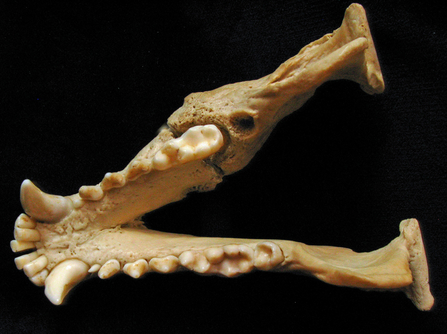
Infected Badger jaw (Ric Morris)
Badgers are very prone to fracturing their lower canine teeth, possibly in fights with rivals, by pulling stones from the earth when digging for food, or enlarging their sett. Damage to the mandible can also lead to infection and abnormal bone growth.
I’ve only hinted at the vast range of possible skeletal stories with these brief examples, but it’s well worth giving skulls and bones a second glance should they turn up on a country walk; you never know what forensic- or spooky- tales they may tell!
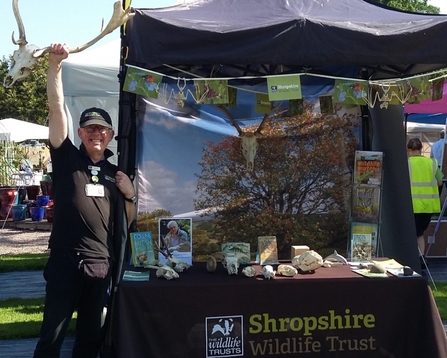
Ric Morris
Look out for Ric at an event near you!


